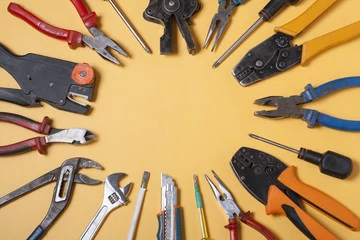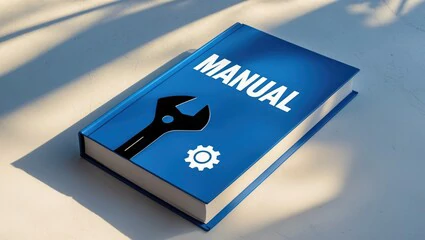Motorcycle Lithium Battery Startup Current Testing
main content
Motorcycle lithium battery startup current testing is a critical step after installation to verify reliable ignition and long-term performance. Unlike traditional lead-acid batteries, lithium variants require precise validation of their cranking power under real-world conditions. Proper testing ensures the battery meets the motorcycle’s electrical demands, prevents premature failure, and safeguards against safety risks like overheating. This guide outlines practical methods, tools, and best practices for accurate current testing.
Key Testing Methods
1.Multimeter Voltage Analysis
Begin by measuring the battery’s open-circuit voltage using a digital multimeter. A fully charged lithium motorcycle battery should read between 13.2V and 13.6V. Significant deviations may indicate improper charging or internal damage.
2.Simulate startup conditions using a carbon pile tester to apply a controlled load (e.g., 50% of the battery’s rated CCA). Monitor voltage stability during the test—stable readings above 9.6V under load confirm healthy cranking capacity .
3.In-Vehicle Cranking Voltage Check
Connect the multimeter to the battery terminals while attempting to start the motorcycle. Observe the voltage drop: a healthy lithium battery maintains at least 9.6V during cranking. Frequent drops below this threshold signal insufficient current output or internal resistance issues .
Tools for Accurate Testing
Digital Multimeters: Ideal for quick voltage checks and basic diagnostics.
Carbon Pile Testers: Provide precise load simulation for high-current validation.
Advanced Diagnostic Tools: Devices like the BS Battery BST 1000 analyze cranking amps (CCA), internal resistance, and charge acceptance in real time .
Safety Precautions
Avoid Overheating: Lithium batteries can overheat during prolonged testing. Limit load tests to 15 seconds and allow cooling intervals.
Check Connections: Loose or corroded terminals distort readings and increase resistance. Clean and tighten connections before testing.
Monitor Temperature: Use infrared thermometers to detect abnormal heat buildup during testing, which may indicate cell imbalance or damage .
Interpreting Results
Optimal Performance: Voltage remains stable (≥9.6V) under load, with minimal temperature rise.
Warning Signs: Rapid voltage drops, excessive heat, or inconsistent CCA readings suggest aging cells, poor connections, or manufacturing defects.
Post-Testing Actions: Recharge the battery if voltage falls below 12.8V after testing, and retest to confirm consistency.
Maintenance Tips for Longevity
Regular Voltage Checks: Perform monthly open-circuit voltage tests to detect early degradation.
Seasonal Load Testing: Validate cranking capacity before extreme weather conditions (e.g., winter).
Storage Protocols: Disconnect the battery during long-term storage and maintain a 50-80% charge to prevent deep discharge .
Conclusion
Prioritizing motorcycle lithium battery startup current testing ensures safe operation and maximizes your investment. Combine multimeter checks, load simulations, and advanced diagnostics to identify issues early. Always adhere to manufacturer guidelines and invest in quality testing tools for reliable results. By integrating these practices, riders can enjoy consistent ignition performance and avoid costly replacements.

START-STOP LITHIUM battery
Enov start-stop battery is designed to provide excellent performance for high-demand start-stop vaehicles. It adopts the third-generation intelligent lithium platform architecture to achieve technological breakthroughs in core indicators such as cycle life, environmental adaptability and energy density. Compared with the traditional lead-acid battery system, the energy efficiency is increased by 210%, the cycle life is extended by 8-10 times, and the monthly self-discharge rate is controlled within 3%. Enov's unique low-temperature battery technology makes a breakthrough in achieving stable output in the whole climate domain from -30℃ to 65℃, maintaining more than 90% of the effective capacity release under extremely cold conditions (-30℃), and maintaining 90% of the capacity in high temperature environments (65℃).
The start-stop battery series products cover the mainstream voltage platform of 12V/24V/48V, and support flexible configuration of LFP (lithium iron phosphate) and NCM (lithium nickel cobalt manganese oxide) dual-material system. All models adopt modular design to support customization of different model specifications. Enuo engineering and technical team to provide full cycle technical service support, if you need, please contact us.
Other products
UAV BATTERY
LITHIUM ENERGY STORAGE BATTERY
QUICK INQUIRY
FAQ
Access to high frequency technical questions with one click, get accurate answers on product application, after-sales policy and customization process.
Service and Support
Get the latest product specifications, explore professional OEM/ODM customization services, click to open exclusive technical support and production solutions.
Become a Partner
We sincerely invite resources to interconnect, work together for win-win development, and immediately open a new chapter of strategic cooperation!




